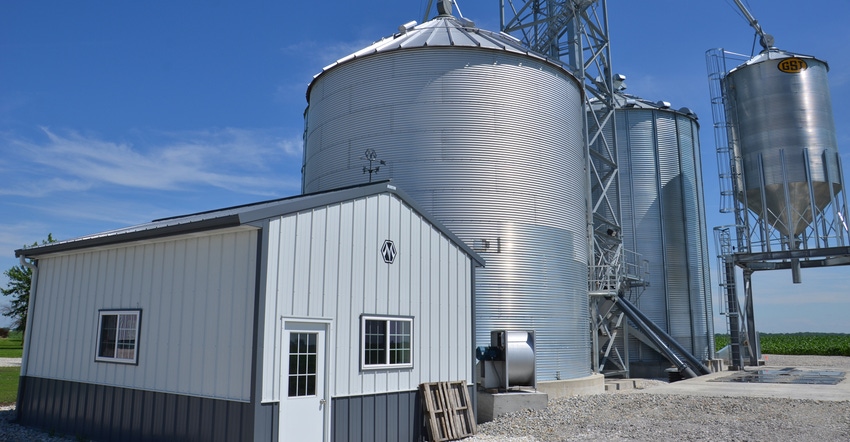
Grain aeration controllers are 30-year-old technology. Yet many bins today don’t have controllers or monitoring systems. Especially if you’re keeping grain into summer, experts suggest they’re worth a look.
“Any assistance in monitoring valuable assets in a bin can be a tremendous help to one’s peace of mind, no matter how much or little risk is involved,” says Gary Woodruff, GSI district manager in Indiana and Kentucky.
Today a 100,000-bushel bin may not be average, but that size bin is in the middle range of bin sizes on modern farms, he explains. There could be approaching $400,000 of assets in that bin. It requires management and monitoring, whether its manual or via electronics, Woodruff adds.
In the following interview with Farm Progress, Woodruff discusses this topic further.
How do aeration controllers or monitoring devices help maintain quality? When the recommendation of storage moisture from 13% to 15% — based on the maximum possible storage period and grain temperature — is maintained in the safe range, chances of an out-of-condition event are minimal. But we regularly see grain put in the bin at too high a moisture content or grain stored longer than expected. When that happens, the need for personal weekly monitoring becomes more crucial, as the risks are higher.
Electronic temperature monitoring can be a good tool to make this monitoring easier and automatic. Of course, temperature sensors can’t monitor every kernel, but it improves how well you can monitor and lets you know the average temperature of the grain, which is important to overall management of grain. Some manufacturers offer carbon dioxide monitoring that gives a more general monitoring of all grain.
What kind of options exist for monitoring and controller systems? The amount of monitoring ranges from a set of temperature cables in the bin with a simple hand-held device that you carry from bin to bin checking weekly for temperature issues to a full-scale system that monitors temperature and CO2 levels, as well as complete control of aeration or drying fans all monitored from the web with warnings sent to you. GSI’s Bullseye offers each of those monitoring levels, as do several other companies.
Remember, additional roof reinforcement may be required for cables. Check with your bin manufacturer. In some cases, possibly requiring sticking with the same manufacturer, you can start with the simple hand-held system and add web monitoring, then aeration or drying control later. Most decide what level of monitoring they want and install what is needed the first time.
What costs are involved in web monitoring? Expect to pay for a web connection and a monthly or yearly fee for the additional services, including a live interface to each bin and the archiving of past data records. Some companies allow using your local area network modem; others do not.
It’s important to go over all requirements and expectations with your local bin equipment dealer. Make sure you’re comfortable with the level of monitoring you select, and that it will provide as complete coverage as possible.
What is the future for bin monitoring? Use of bin monitoring equipment is growing as the demand on management and labor availability continues to increase. What was once a rarely installed feature has become common, and most every local bin dealership can answer specific questions about what kind of an investment will be required for your storage system.
About the Author(s)
You May Also Like




